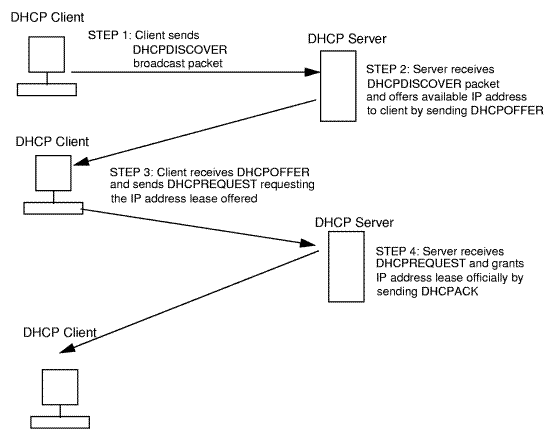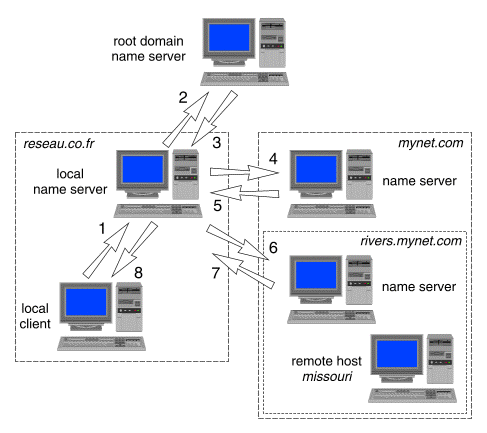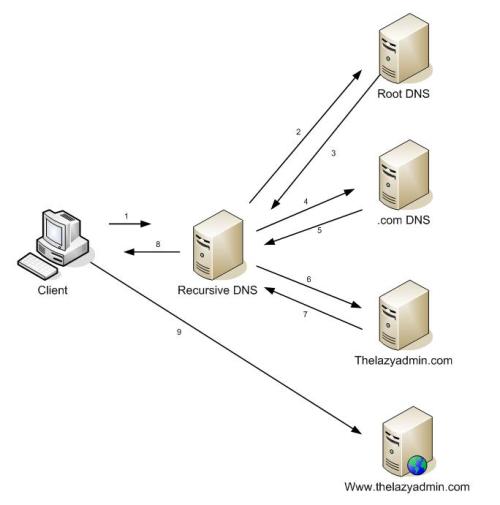1. client sends broadcast Discover from port 68; server receives on port 67
2. server sends unicast Offer to client's port 68
3. client sends broadcast Request, i.e. I request this offered IP config.
4. server send unicast Acknowledge to client.


half-duplex: HDX: one way at a time. CB/ham radio, hub (obsolete) and bus Ethernet, WiFi, polite human conversation,
one lane bridge/tunnel
full-duplex: FDX: both ways at a time/simultaneously. telephone, switched Ethernet, impolite human argument.
simplex: one way only. broadcast TV and radio, PA system, GPS.
Transmission: (on one wire/cable)
baseband: one signal only. LANs
broadband: multiple signals multiplexed. CATV.
Technically DSL and cable modem are this defintion
of broadband, the popular meaning being "fast" Internet connection
host's IP configuration:
1. static/manual
2. DHCP dynamic/automatic
3. Autoconf/APIPA 169.254 (169.254.1.0-169.254.254.255 [first/last 256 reserved])
ARPs to check if unused.
DHCP
1. client sends broadcast Discover from port 68; server receives on port 67
2. server sends unicast Offer to client's port 68
3. client sends broadcast Request, i.e. I request this offered IP config.
4. server send unicast Acknowledge to client.


Reservations/"static" based on MAC address for servers etc.
Client can request and be assigned previous IP configuration.
DHCP Relay (ip helper-address): default gateway router can send DHCP requests to another network where the DHCP server is.
scope: range of IP addresses. pool.
DHCP timers:
T1 (50% of lease, by default) ask for lease renewal from DHCP server.
T2 (87.5% of lease, by default) try rebinding with any other DHCP server.
ipconfig /displaydns DNS resolver cache ipconfig /flushdns flush DNS resolver cache nslookup FQDN_or_DN dig dig -x reverse
Resource records (RR): at the DNS server.
SOA (start of authority): domain (zone). Serial number: if change, triggers zone transfer.
A (address): hostname's IP address. AAAA: IPv6
CNAME (canonical name): alias for an existing hostname
MX: name of mail server for this domain.
NS: name server for this domain.
PTR (pointer): reverse lookup
Zone transfer of info on primary name server to secondary name servers.


